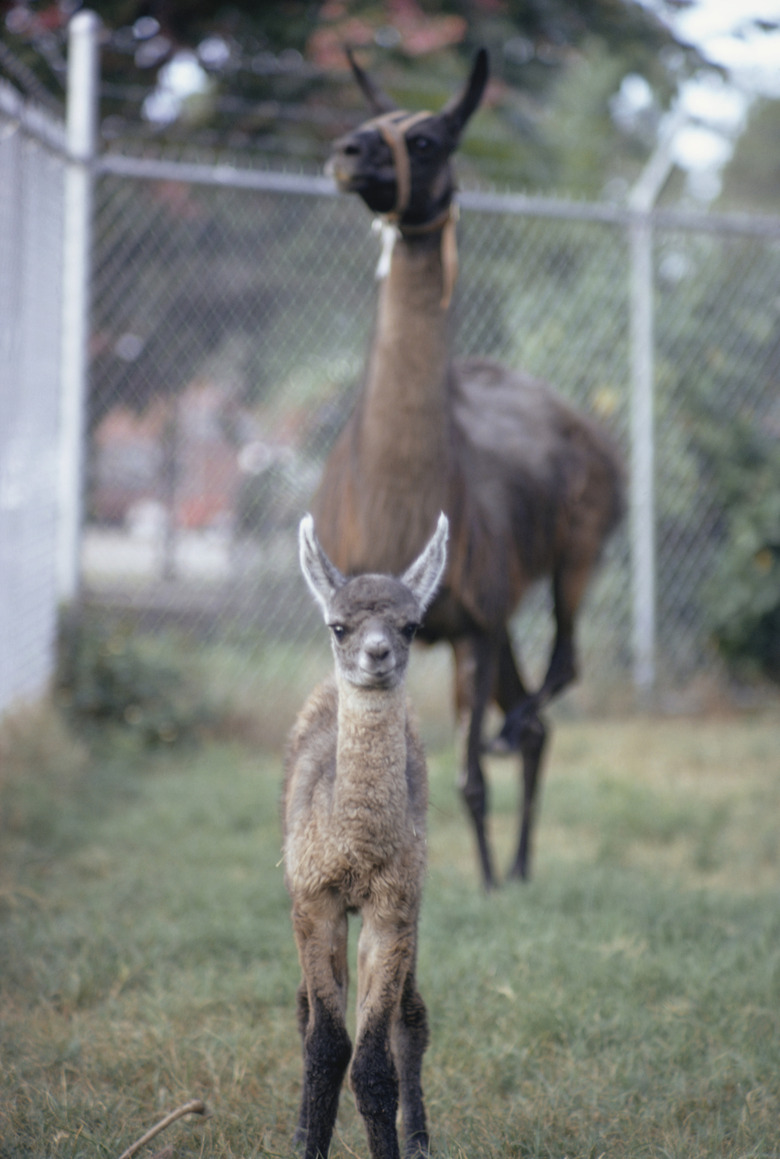Renewable & Nonrenewable Resources For The Pacific States
The Pacific States are in direct contact with the Pacific Ocean and include Alaska, California, Hawaii, Washington and Oregon. In addition to the renewable resources of forests, agricultural products, air, water and wildlife, Pacific states add marine fisheries and habitats. Recreation and tourism is high in all the Pacific states. Nonrenewable resources that occur in a limited supply and can't regrow or be replaced include minerals and fossil fuels. Pacific States vary in climate, topography and geology, and contain a rich offering of natural resources.
Alaska
Although Alaska is the largest state with 365 million acres, only 1 million acres produce food, according to National Agriculture in the Classroom (NAGC). The growing season is short but intense, with long days and short nights. Hay is the biggest crop, and livestock include:
• cattle
• sheep
• pigs
• reindeer
• bison
• yak
• elk
Alaska contains large forested areas and abundant wildlife, including big game. Commercial fishing supplies half of all the seafood eaten in the U.S., according to Area Development Online (ADO), including salmon, cod, flounder, shrimp, crabs and shellfish. In nonrenewable resources, Alaska produces 14 percent of the oil for the U.S., according to NAGC, and mines gold, silver, zinc, lead, molybdenum, coal, crushed stone, and sand and gravel.
California
With its amazing mix of climates from high mountain peaks to arid deserts, California grows about half of the vegetables, fruits and nuts consumed in the U.S., and livestock and poultry bring in 24 percent of California's gross cash income, according to NAGC. Water can be a limiting factor in arid and semiarid areas. California contains about 33 million acres of forested land. In 2011, California had about 700 active mines, with important products being boron, portland cement, gold, silver, sand, gravel, crushed stone and gemstones, according to the California Department of Conservation. The state's oil deposits produce about 37.2 percent of the petroleum used in California, according to the California Energy Commission.
Hawaii
Tropical Hawaii is home to unique plants and animals and areas of scenic beauty. The surrounding reefs and ocean life provide food as well as recreation opportunities. According to its website, the Hawaii Department of Land and Natural Resources administers approximately 2 million acres of conservation land. The Library of Congress American Memory website indicates Hawaiian agriculture formerly had large acreages devoted to pineapple and sugar cane, but increased agricultural diversity produces over 40 crops, including coffee and macadamia nuts. The Island of Hawaii raises 90 percent of the beef produced in the entire state. According to Pennsylvania State University, mining in the state consists of quarrying for crushed stone and removal of sand and gravel from open-pit mines.
Washington and Oregon
Washington contains a rain forest in the Olympic Mountains in the northwest and a steppe climate in the east with limited moisture from the rain shadow effect of the Cascade Mountains. According to NAGC, about 230 crops grow in this state, with Washington leading the nation in production of raspberries, hops, spearmint oil, apples and sweet cherries. Fish and shellfish include trout, oysters, clams, geoducks and mussels. Oregon has a robust agriculture, despite dry summers that require irrigation, with crops yielding 69 percent of total sales, according to ADO. Leading crops are blackberries, hazelnuts, loganberries and grass seed. Beef and dairy products are important, as are salmon, tuna, shrimp, crabs and oysters. Oregon and Washington together contain 17 National Forests that provide timber, grazing, wildlife habitat and recreation. Washington's mineral resources include sand, gravel, crushed stone, portland cement, gypsum, magnesium and gold. Oregon contains the only producing natural gas field in the Pacific Northwest and mines sand, gravel and crushed rock, according to information retrieved March 2014 from Oregon's Department of Geology and Mineral Industries website.
References
- The Library of Congress American Memory: Regions of the United States
- Pennsylvania State University: Environment & Ecology Series: Renewable & Nonrenewable Resources
- National Agriculture in the Classroom: A Look at Alaska Agriculture
- Area Development Online: Regional Review: Natural Resources Fuel Growth in the Pacific States
- Netstate.com: Alaska: Alaska Economy
- National Agriculture in the Classroom: A Look at California Agriculture
- University of California Forest Research and Outreach: California Forests
- California Department of Conservation: California Non-Fuel Minerals 2011
- Honolulu Civil Beat: Hawaii Department of Land and Natural Resources
Cite This Article
MLA
Csanyi, Carolyn. "Renewable & Nonrenewable Resources For The Pacific States" sciencing.com, https://www.sciencing.com/renewable-nonrenewable-resources-pacific-states-23512/. 24 April 2017.
APA
Csanyi, Carolyn. (2017, April 24). Renewable & Nonrenewable Resources For The Pacific States. sciencing.com. Retrieved from https://www.sciencing.com/renewable-nonrenewable-resources-pacific-states-23512/
Chicago
Csanyi, Carolyn. Renewable & Nonrenewable Resources For The Pacific States last modified March 24, 2022. https://www.sciencing.com/renewable-nonrenewable-resources-pacific-states-23512/
